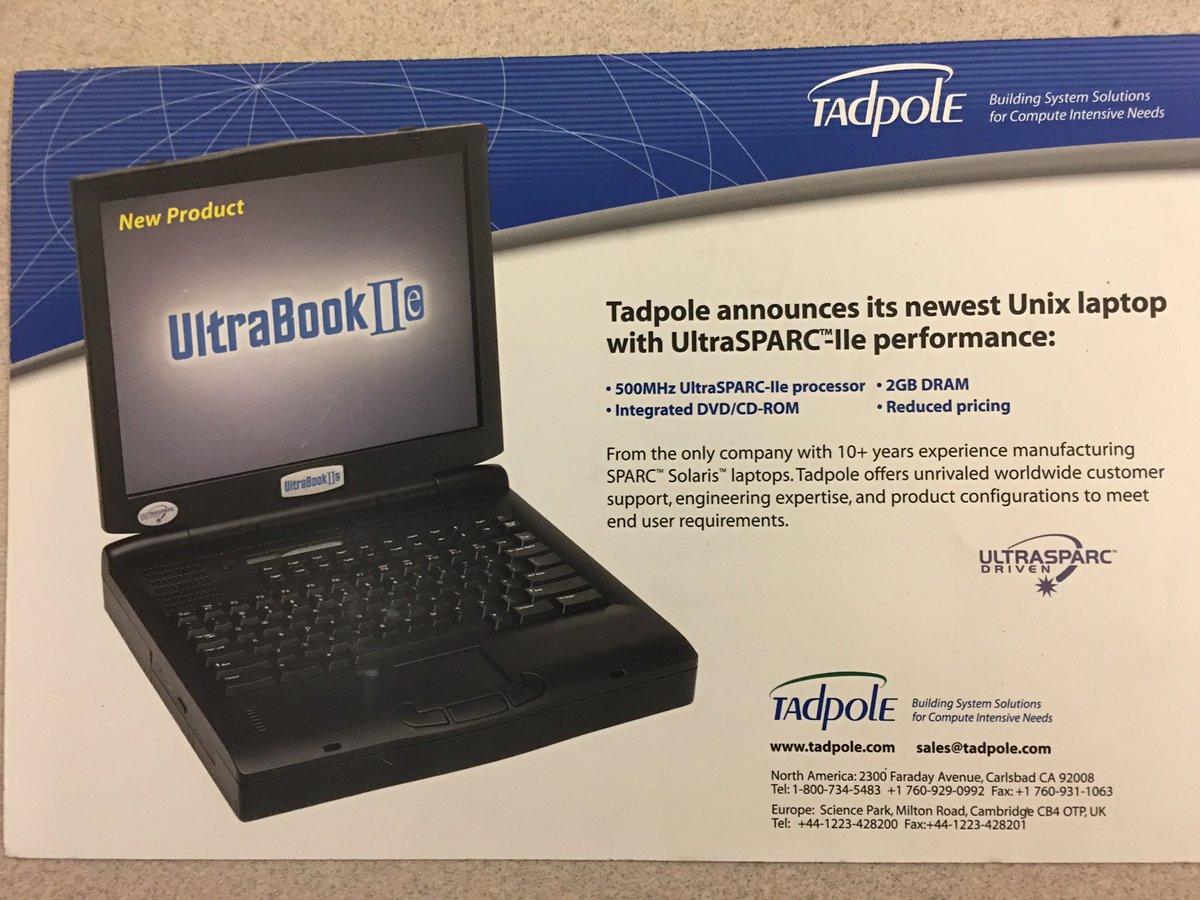
I started with an IPC or IPX and various Enterprise servers on the back end. Just loved the engineering of the well matched OS and hardware combos. My early forays into FOSS was on SunOS and Solaris until Linux commoditized the market. A great platform when compared to peers of the era.
And laboratory science labs as well, well before the dotcom area. We used Sun Solaris workstations in biology labs starting in the late 1980s. There were also some SGI Irix workstations in labs that worked on protein structure because it was the only way to handle the 3D models required.
My dot com experience was selling data center software to the Nortel/Worldcom/Qwest dark fiber crowd who at that time had unlimited money to spend.
My demo setup was a Tadpole SPARC Ultrabook that I lugged around to sales meetings as a server (along with a regular laptop for the client connected together with a crossover Ethernet cable. Can’t tell you how much fun it was flying carrying around 50 lbs of laptops). I thought it was cool that it ran native Solaris on a portable laptop. It also cost close to $20 grand.
I can’t say that I worked for Sun, but I did work for Oracle for several years doing final assembly and testing of x86 and SPARC based servers at a former Sun facility. There were still a few Sun branded bits of memorabilia and hardware kicking around the place when they let me go.
I hadn’t realized that Sun started in the early 80s. In my head I’ve always thought of Sun as a 90s company. I kind of wish the video spent more time discussing other Sun technologies like ZFS or Java, but there’s only so much you can fit in without boring half the audience.
I worked at Sony’s Broadcast Video research group in the UK as a student in 1990, then for a couple of years after graduating. Had SPARCstations for a lot of the work we were doing, but also Sony’s own NEWS workstations:
The ‘laptop’ that I would lug home was one of these:
No carry handle or case - nice!
We also had Sony VAIO desktop PCs long before their laptops arrived in the West - and using one that had Japanese Windows for Workgroups 3.11 on it was an interesting challenge…
The directory navigator the little girl used in the infamous “This is Unix, I know this!” scene actually existed. Someone at the company wrote it for the movie and then they started shipping it with Irix because why not. It was a little utility you could run as a very slow graphical way to navigate to a directory.
One of my first assignments at the consulting firm I joined in the mid-80’s was to choose a *nix system. After looking at Apollo, Sun and some other options, we went with SGI, I think it was an ok decision, not least because software distributions came on CD-ROM and were relatively painless.
One of our clients went with HP-UX. I remember going into their office and seeing the sysadmins desk piled high with stacks of floppy discs. That guy had some kind of breakdown as I recall.
1:20 - “Stanfurd”?

I worked for a medical device company for almost 20 years and we standardized on SGI (edit: I was wrong, it was Sun Microsystems, curse my feeble brain!) systems so that we had a stable, non-changing platform. We were regulated by the FDA since our product was classified as a medical device (nurse’s central monitoring stations) and when Sun started to falter it became surprisingly difficult to find another, non-frequently changing hardware platform, and a real pain to qualify off the shelf PC parts for “medical” use.
Good times, good times…
Did you mean to say Sun?
Alas, my only real exposure to SGI was an O2 machine I used to run IDL, matlab, and oracle. Software 3D.
Ahhh dammit, you’re right, stupid, fallible memory.
Making the correction now…
This topic was automatically closed after 5 days. New replies are no longer allowed.


